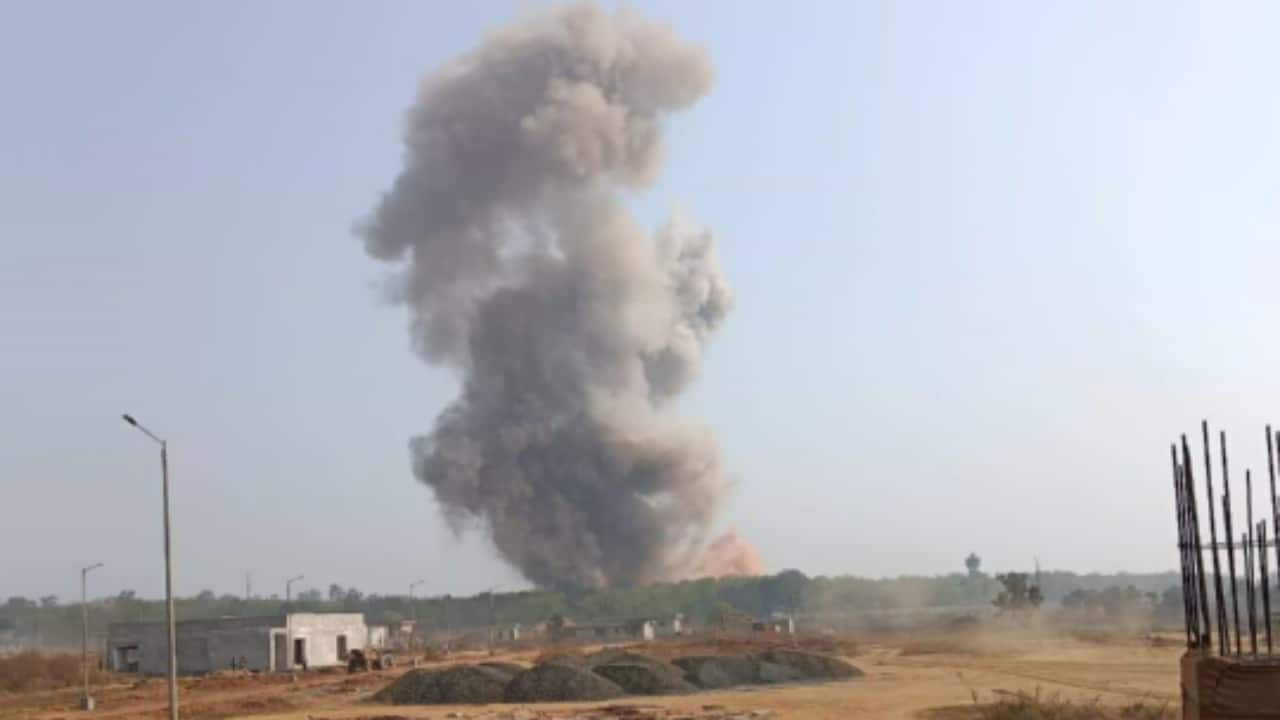 |
|
A devastating explosion rocked the ordnance factory in Bhandara, Maharashtra, India on Friday, resulting in a tragic loss of life and significant injuries. The incident, which occurred around 10:30 am, sent shockwaves through the community and sparked a large-scale rescue operation. Initial reports indicated a roof collapse within a unit of the factory following the blast, trapping several workers. The sheer force of the explosion, the nature of the ordnance factory's operations, and the subsequent collapse created a complex and dangerous situation for emergency responders. The immediate aftermath was chaotic, with reports of injured workers scattered amidst the debris. The precise cause of the explosion remains under investigation, but the incident highlights the inherent risks associated with handling and storing explosive materials.
The response to the disaster was swift, involving multiple agencies coordinating their efforts to save lives and contain the damage. Union Minister Nitin Gadkari confirmed eight fatalities, while early reports suggested a higher number of casualties. The discrepancy likely stems from the dynamic nature of the situation and the challenges in accurately assessing the number of victims amidst the wreckage. Chief Minister Devendra Fadnavis provided updates on the rescue efforts via social media, highlighting the deployment of the State Disaster Response Force (SDRF) from Nagpur and the presence of local authorities at the scene. Firefighters and ambulances were immediately dispatched to the site to provide medical aid and support the rescue teams. The use of heavy machinery, such as JCBs, was crucial in clearing the debris and accessing trapped individuals. The coordinated efforts of the various agencies underscore the importance of preparedness and rapid response in such critical incidents.
The Bhandara ordnance factory explosion raises serious questions regarding safety protocols and risk management within the facility. A thorough and transparent investigation is crucial to determine the root cause of the explosion and to identify any potential systemic failures that may have contributed to the tragedy. Lessons learned from this incident should be implemented across similar facilities nationwide to prevent future occurrences. The investigation will likely focus on a variety of factors, including the storage and handling procedures for explosive materials, the structural integrity of the factory buildings, and the effectiveness of existing safety regulations. The findings of the investigation will be vital in implementing appropriate safety measures and improving oversight within the ordnance factory system. Beyond the immediate response and investigation, the focus must shift to providing support for the victims, their families, and the community. This includes offering comprehensive medical care, psychological support, and financial assistance to those affected by the devastating blast.
The long-term impacts of the Bhandara explosion extend beyond the immediate human cost. The event has highlighted the vulnerability of communities located near such facilities and the need for robust emergency preparedness plans. It also raises questions about the potential environmental consequences of the blast and the need for thorough environmental assessments. The investigation will need to address not only the immediate cause but also the broader context of safety regulations, risk assessment practices, and community engagement strategies. Ultimately, this tragedy serves as a stark reminder of the dangers associated with industrial operations, the importance of prioritizing safety, and the vital role of effective emergency response systems. The memories of those lost should serve as a catalyst for improvement and a commitment to preventing similar disasters in the future. The nation mourns the loss of life and expresses its deepest condolences to the families and friends of the victims.
In conclusion, the Bhandara ordnance factory explosion represents a significant event with far-reaching consequences. The immediate priority remains the ongoing rescue and recovery efforts, followed by a comprehensive investigation to determine the cause of the incident and prevent similar tragedies. The incident underscores the necessity for stringent safety protocols, regular inspections, and robust emergency response capabilities within ordnance factories and other high-risk industrial settings. A commitment to transparency, accountability, and continuous improvement will be essential in addressing the long-term impacts of this tragedy and ensuring the safety of workers and surrounding communities.
Source: Maharashtra explosion: 8 killed in blast at ordnance factory in Bhandara; search-rescue ops underway
